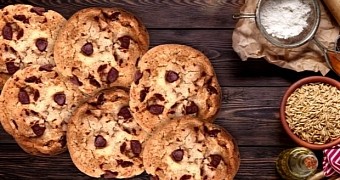There are some foods out there that are positively divine and pretty darn impossible to keep out of our mouth. Chocolate chip cookies are most definitely on the list.
We've been eating them for years, and yet, few people know exactly how they're made. As it turns out, there's a whole lot of chemistry happening when it comes to baking a fresh batch of chocolate chip cookies.
For starters, everybody knows chocolate chip cookies must display a certain degree of chewiness. We don't want them to be too dry or ruin our teeth when we bite into them, do we?
Well, this chewiness is the result of gluten, a protein composite that is naturally occurring in wheat and related grains. The gluten in cookies forms when flour is mixed with water.
Then - and you might want to try and keep this in mind for the next time you feel like playing the baker - scientists say cookies are bound to taste better if cooked at a higher temperature.
The temperature they recommend is 375 degrees Fahrenheit (190 degrees Celsius). This should break down the sugar you've added to the cookies and release a caramel flavor.
“This reaction [i.e. caramelization] pleases your tongue by producing molecules with butterscotch, rum and nut flavors,” specialists explain in the video below.
Then, if you have a soft spot for fluffy cookies, just add some sodium bicarbonate to the recipe. This should do the trick and make them all puffy and plump.
Check out the video below to learn more about the chemistry of chocolate chip cookies and, well, have fun giving these tips and tricks a try.

 14 DAY TRIAL //
14 DAY TRIAL // 